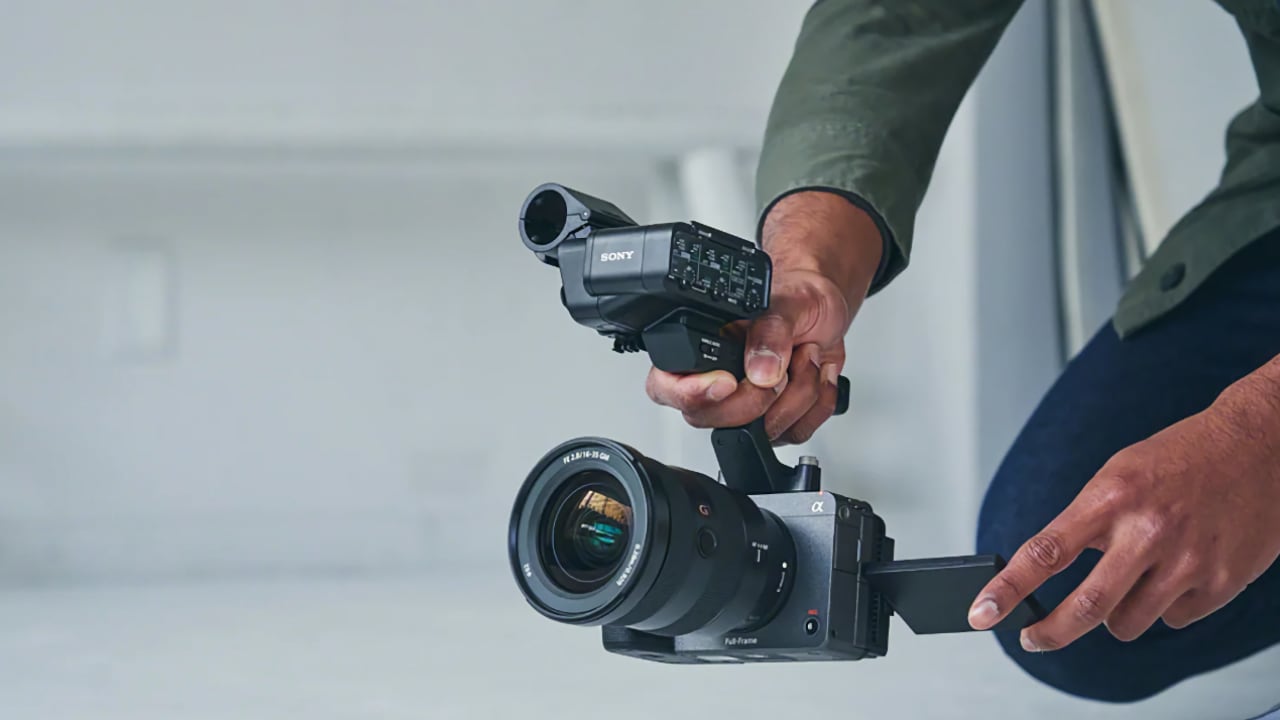
Phil Rhodes reckons there needs to be a chat about fantastic modern cameras, their enormous sensitivity, and the sort of filmmaking it all provokes.
We approach this in the context of much continued interest around The Creator, which garnered a lot of headlines when it was released on the basis that it was shot on a modest Sony FX3 and is still being talked about today. It’s something of a theme in director Gareth Edwards’ work: his 2010 film Monsters featured the earlier EX3, which was arguably comparable in market position at the time. This is all great, but without wanting to unfairly malign the pictures, those headlines have not been about how wonderful the film looks. They’ve been about the camera used to shoot it. [And yes, well aware we did just that ourselves. Ed.]
Of course, The Creator looks great, the trailer filled to the brim with gorgeous cinematography of skilled actors, spectacular vistas, and a lot of very well-done CG depicting sci-fi environments and some very difficult person-integration. There’s also some less fantastic muzzle flash, but that’s the simple effect that Hollywood perpetually fails to do as well as a moderately enthusiastic YouTuber.
The Creator is colourful - refreshingly so, given the undifferentiated overcast of recent superhero movies. At least some of it is anamorphic, deliberately in the extra-wide 2.76:1 aspect ratio of Ben Hur. That’s a daring comparison to invite, and whether we consider that invitation brave or foolhardy is a matter of opinion. Sill, in the end, the lenses and framing give both film historians and bokeh-peepers something to blog about, beside the choice of an inexpensive camera.
$80m buys you a lot of guerrillas
That’s good, because the reality is that The Creator was an $80m production, though it’s been claimed that “the filmmakers used guerrilla filmmaking methods,” which prevented the film, which is stacked to the gills with spectacular images, from costing $300m. In a world which should probably have a larger number of less expensive movies, that’s no bad thing. Anyone who’s done any student filmmaking not funded at the tens-of-millions level, as most of us have, can probably see places where Hollywood could trivially save itself the budget of a dozen student shorts with a less conventional approach.
And, of course, it’s worth pointing out that money was definitely spent in other areas, with both the vfx and sound departments being nominated for 2024 Oscars.
But you don’t ask Ken Watanabe to sit on a folding fishing chair between takes on something shot in someone’s backyard. He gets a nice hotel room, a Star Waggon, a personal driver, and a nice seat for a cordon bleu lunch. There is a limit to how much a production of this scale can, well, downscale, and that’s where the wet starts to get in on the idea of shooting huge productions with tiny cameras. Spectacular locations are wonderful, but they have to be lit, and the daily wages of the electrical department on The Creator probably cost more than the outright purchase of an FX3 body. The production probably spent more on C-stands than it did with Sony.
As we saw when we looked at an example setup from Hidden Figures, creating lighting environments that genuinely look like a theatrical feature can fill a lot of space with a lot of equipment, and it’s that which makes things expensive - and pretty. But in the end, the revelation is not that it’s possible to shoot a high-end feature with a less-high-end camera. The revelation is that it doesn’t really change much.
Time = money and vice versa
Yes, there’s a lot one can do by waiting for magic hour and having a few people stand in the right spot with some pieces of styrofoam insulation board, and those are all very useful lessons for anyone interested in showing what they can do without having an eight-figure sum to do it with. There’s also a lot one can do with, say, Blender, if one is willing to undergo the primordial experience of its user interface. It’s never been more possible to turn out staggeringly impressive material for not much money, though it still takes a lot of time, which is sort of the same thing. Try and do it alone, and while it is theoretically possible, even if some spectacularly multitalented writer-director has the skills, a feature on the level of The Creator represents years - a decade, realistically? - spent sitting alone in a dark room.
So yes, The Creator was shot at least in part on a Sony FX3, but the nice lighting, engaging performances, beautiful locations and excellent visual effects have nothing to do with the camera, and that’s a much more valuable realisation. The FX3 is a fantastic camera and the availability of that sort of thing to people working on indie productions is great. Still, like one of those plunges into the ocean that people undertake as a sort of stunt on recreational trips to the Arctic, there’s a shock realisation underlying the fact that the technology is so good: if we can’t get cinema-level pictures out of affordable cameras at this point, the problem is not the camera.
Tags: Production Sony


Comments